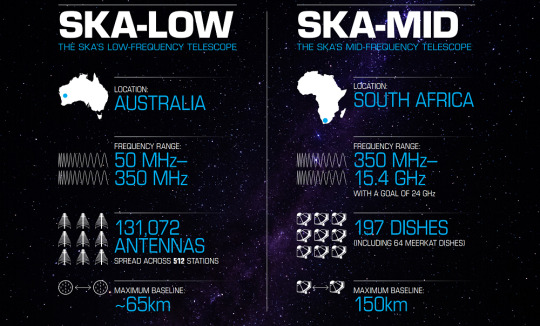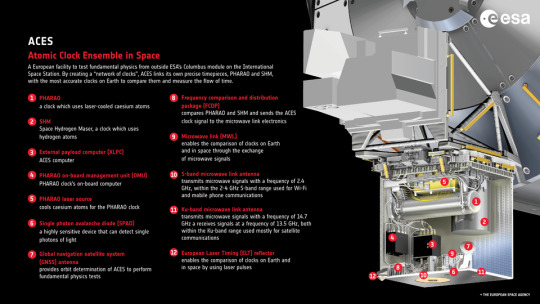#construction project segmentation
Explore tagged Tumblr posts
Text
Managing Complexity | How a Construction Estimating Service Handles Multi-Phase Projects
Introduction Multi-phase construction projects—whether for residential communities, commercial developments, or infrastructure builds—present a unique set of challenges. These projects require meticulous coordination across timelines, trades, and budgetary constraints. A construction estimating service becomes an indispensable asset in managing this complexity. By breaking the project into defined phases and applying structured estimating techniques, estimators help ensure clarity, efficiency, and financial control from planning through execution.
Understanding Multi-Phase Projects Multi-phase projects involve construction that unfolds in sequential or overlapping stages. Each phase might have its own design, scope, permitting requirements, and budget. Without careful cost planning, projects can suffer from cost overruns, resource misallocations, and scheduling conflicts. A construction estimating service mitigates these risks by producing phase-specific estimates that contribute to an accurate overall cost forecast.
Phase-Based Budgeting and Cash Flow Planning One of the primary contributions of a construction estimating service in multi-phase projects is segmented budgeting. Estimators prepare separate budgets for each project phase, allowing stakeholders to manage cash flow more effectively. This approach ensures that funding aligns with the project schedule and avoids unnecessary capital tie-ups in early phases.
Improved Forecasting with Historical Data and Cost Indices Construction estimating services often use historical data from similar projects to inform pricing for each phase. They also adjust for anticipated material and labor price fluctuations using industry cost indices. These forecasting tools are especially useful for long-term, multi-year projects where inflation or market volatility can have a significant financial impact.
Trade Coordination Across Phases Different phases may involve different trades or subcontractors, and proper sequencing is crucial. A construction estimating service helps coordinate trade involvement across phases, accounting for their availability, costs, and project dependencies. This avoids delays caused by poor scheduling or miscommunication between contractors.
Scope Definition and Scope Control In multi-phase projects, the scope of work for later phases often evolves as earlier stages are completed. A construction estimating service provides detailed documentation and clear scope definitions for each phase, reducing the likelihood of scope creep. Estimators also flag areas where cost contingencies may be needed, ensuring flexibility without compromising financial oversight.
Phase-Specific Risk Assessments Each phase of a project carries distinct risks—such as weather impacts during specific seasons, regulatory delays, or equipment mobilization needs. A skilled estimator evaluates these risks and integrates them into the phase-specific cost models. This proactive approach allows contractors and owners to make informed decisions and reduce the likelihood of expensive surprises.
Technology Integration for Phase Tracking Modern construction estimating services utilize software that integrates estimating with project scheduling and management tools. This digital coordination enables real-time updates to budgets and forecasts as each phase progresses. Estimators can adjust estimates dynamically to reflect on-site conditions, scope changes, or updated client requirements.
Logistical Planning and Resource Optimization Multi-phase projects often require shared use of materials, labor, or equipment across different stages. Estimators help identify opportunities for resource optimization—for instance, bulk material purchases or long-term labor contracts that span multiple phases. This helps in controlling costs and reducing waste.
Inter-Phase Communication and Stakeholder Alignment Construction estimating services contribute to better communication between architects, engineers, contractors, and clients. They provide a financial roadmap for each phase that aligns everyone on the expected costs, deliverables, and timelines. This alignment minimizes rework, confusion, and last-minute budget adjustments.
Contingency Planning and Change Management In multi-phase projects, changes are inevitable. A construction estimating service builds in appropriate contingencies based on the complexity and uncertainty of each phase. Estimators also assist in pricing change orders accurately and swiftly, ensuring minimal disruption to both schedule and budget.
Regulatory and Permit Considerations by Phase Each phase may require separate regulatory approvals or permits. Estimators factor in the time and cost associated with these processes, including fees, consultant costs, and compliance-related expenses. This level of detail is crucial to avoid delays or cost escalations due to overlooked requirements.
Comprehensive Reporting for Long-Term Planning A professional construction estimating service provides consistent reporting and updates for each project phase. These reports offer insights on current costs, projected spending, and budget performance. They also help in adjusting long-term plans to align with real-time data, especially in projects lasting several years.
Conclusion Managing multi-phase projects is no easy task, but with a construction estimating service, it becomes significantly more feasible. These professionals bring structure to complex timelines, improve forecasting accuracy, and ensure financial discipline from start to finish. Whether it's a four-phase residential build or a multi-tower commercial complex, the role of an estimator is central to success, allowing project teams to move forward with confidence, clarity, and cost control.
#construction estimating service#multi-phase construction project#construction phase budgeting#estimating complex builds#phase-specific estimates#construction cost control#construction project segmentation#contractor phase coordination#construction forecasting#trade scheduling#phase-by-phase construction planning#phased development cost#estimating service benefits#construction financial planning#scope management#estimating risk analysis#resource allocation in construction#construction estimating technology#cost estimating software#managing construction inflation#construction project communication#estimating for large projects#construction budget breakdown#cash flow planning construction#contingency cost estimating#multi-phase estimating strategy#estimating permit costs#phase coordination tools#project lifecycle estimating#estimating service accuracy
0 notes
Text
“Texas’ border wall plan appears to be facing a sad, silent death
Texas Republicans quietly stopped funding for their state’s border wall, seemingly acknowledging that the plan has been a waste of time and money.
June 19, 2025, 6:00 AM EDT
By Ja'han Jones
Texas appears to have quietly stopped funding its plans to construct its own border wall with Mexico, which could mark the end of an embarrassing boondoggle designed to bolster one of President Donald Trump’s early campaign slogans.
For years, conservatives have framed the idea of a border wall as essential to immigration enforcement, despite a chorus of critics denouncing it as costly and ineffective. And Texas Republicans’ decision to defund the project seems like a tacit acknowledgment of that reality.
The Texas Tribune was first to report that a new state budget signed into law earlier this month includes no money for the wall, which was envisioned as covering more than 800 miles. But only a fraction of that was ever completed — at great cost to taxpayers.
According to the Tribune:
Four years after Gov. Greg Abbott announced Texas would be the first state to build its own border wall, lawmakers have quietly stopped funding the project, leaving only scattered segments covering a small fraction of the border.
That decision, made in the waning hours of this year’s legislative session, leaves the future of the state wall unclear. Just 8% of the 805 miles the state identified for construction is complete, which has cost taxpayers more than $3 billion to date. The Texas Tribune reported last year that the wall is full of gaps that migrants and smugglers can easily walk around and mostly concentrated on sprawling ranches in rural areas, where illegal border crossings are less likely to occur.
Some Texas Republicans seem intent on spinning this retreat from their ill-conceived idea as a victory of sorts, or at least downplaying it as a sign of GOP backtracking. A spokesperson for Gov. Greg Abbott told the Tribune that the Trump administration’s immigration crackdown has allowed the state to adjust its enforcement plans. And state Sen. Joan Huffman, the state’s lead budget writer, told the outlet that rather than paying for the wall, the budget authorizes money for state entities that are aiding Abbott’s immigration crusade: a controversial project known as Operation Lone Star, which also has been denounced as a tremendous waste of time and money.
The idea of a “big, beautiful wall” between the U.S. and Mexico has become deeply ingrained in the MAGA movement — Trump’s followers have used chants and costumes to celebrate it. And yet, the idea appears dead as a doornail in Texas, a state virtually under total Republican control.
And at this point, the scattered remains of the state’s border wall seem like little more than shrines to the president’s ignorant policies.”
#Texas border wall#republican assholes#maga morons#crooked donald#traitor trump#traitor#resist#republican values
177 notes
·
View notes
Text
California's Endless Highway: A 17-Year Odyssey Under Governor Newsom
March 27, 2025
SACRAMENTO - For 17 years, California Governor Gavin Newsom has presided over a highway project that has become a symbol of ambition, delay, and political theater. What began as a promise to revolutionize the state’s transportation infrastructure has morphed into a saga of grandiose announcements, ballooning costs, and minimal progress. As the current date marks March 27, 2025, this article chronicles the timeline of this elusive highway, critically examining the gap between Newsom’s triumphant rhetoric and the stark reality on the ground.
2008: A Vision Takes Root
The story begins in 2008, when California voters approved Proposition 1A, authorizing $9.95 billion in bonds to fund a high-speed rail system, not a traditional highway. Newsom, then mayor of San Francisco, championed the project as a transformative step toward a sustainable future. While this initiative was technically a rail project, it laid the groundwork for Newsom’s later focus on transportation infrastructure, including highways, as he ascended to the governorship. The rail’s promise of connecting Los Angeles to San Francisco captured imaginations, but it also set a precedent for ambitious timelines and optimistic funding projections.
2019: Newsom Takes the Helm and Shifts Focus
Upon becoming governor in January 2019, Newsom inherited the high-speed rail project, already mired in cost overruns and delays. In his first State of the State address, he acknowledged the rail’s challenges, scaling back the original vision to a 171-mile segment between Merced and Bakersfield. Yet, alongside this recalibration, Newsom began emphasizing broader infrastructure goals, including highway improvements. That year, he signed an executive order redirecting some gas tax funds, raised under Senate Bill 1 of 2017 -from road repairs to rail and transit, prompting criticism that highway maintenance was being sidelined. Still, he promised accelerated highway construction to complement the rail, framing it as part of a “build more, faster” agenda.
2020-2022: Promises Amid a Pandemic
As the COVID-19 pandemic gripped California, Newsom’s administration leaned into infrastructure as an economic recovery tool. In 2021, he touted a $13 billion investment in transportation, including highway upgrades, funded partly by federal stimulus dollars. Press releases highlighted plans to repair bridges, widen lanes, and enhance safety on major routes like Highway 99. Yet, progress reports were scarce, and critics noted that much of the funding was earmarked for planning rather than construction. By 2022, Newsom announced the “substantial completion” of preparatory work on several highway projects, but ground-level evidence, such as visible construction, remained limited.
2023: Streamlining and Celebration
In May 2023, Newsom unveiled a legislative package to streamline infrastructure projects, including highways, by cutting bureaucratic red tape. Standing at a solar farm site in Stanislaus County, he declared, “We’re building more, faster,” promising thousands of jobs and modernized roads. The Los Angeles Times reported that this initiative aimed to leverage $180 billion in state and federal funds over a decade. Later that year, he signed the package into law, celebrating it as a historic reform. However, specific highway projects, like the widening of Highway 46 in San Luis Obispo County, remained stalled, with funds still held in reserve.
2024-2025: Milestones or Mirage?
Fast forward to 2024, and Newsom’s administration claimed $13 billion had been invested in transportation that year alone, with a focus on “climate-resilient roads and highways.” Press releases cited new bike lanes, bridge repairs, and wildlife crossings along Interstate 15 as evidence of progress. On January 7, 2025, Newsom broke ground on a railhead near Bakersfield, doubling down on his transportation legacy with a nod to highway synergies. Yet, as of March 27, 2025, no single highway project spanning his 17-year political career, from his mayoral days to now, has been fully completed and operational under his direct oversight, raising questions about the substance behind the fanfare.
The Money Trail
Financially, the picture is murky but staggering. Since 2008, the high-speed rail project alone has consumed over $20 billion, with estimates now exceeding $128 billion for the scaled-back Merced-Bakersfield line, according to official updates. Highway-specific spending is harder to isolate, but Senate Bill 1 has generated billions since 2017, supplemented by federal funds like the $6.5 billion from the 2021 Infrastructure Investment and Jobs Act. Caltrans reports suggest hundreds of millions have gone to highway planning and repairs, yet tangible results, completed miles of new or upgraded highway, remain elusive. Critics estimate that at least $2-3 billion has been spent on highway-related efforts under Newsom’s watch, with little to show beyond press conferences and partially funded initiatives.
The Current Reality
Today, California’s highways are a patchwork of aging infrastructure and incremental upgrades. Highway 99, a frequent target of Newsom’s promises, still suffers from congestion and unfinished widening projects in Madera and Tulare counties. The Sacramento Bee noted in 2019 that $17 million for such work was deferred, a pattern that persists. Meanwhile, the high-speed rail, often conflated with broader transportation goals, inches along with 119 miles under construction in the Central Valley, hardly a highway, and far from the statewide network Newsom once envisioned.
Final Considerations: Propaganda vs. Reality
Governor Newsom’s 17-year highway narrative is a masterclass in political optics. His annual triumphant announcements, laden with phrases like “world-leading,” “transformative,” and “faster”, project an image of decisive leadership and progress. This propagandistic angle leverages California’s appetite for bold solutions, casting Newsom as a visionary tackling climate change, economic stagnation, and infrastructure decay. The reality, however, is a sobering contrast: billions spent, years elapsed, and a state still waiting for its promised highways.
The disconnect lies in execution. While Newsom’s administration excels at securing funds and crafting legislation, the follow-through, turning dollars into asphalt, lags. Environmental reviews, legal challenges, and shifting priorities (e.g., rail over roads) have bogged down projects, a fact he acknowledged in 2019 but has since glossed over. The money spent to date, potentially exceeding $3 billion on highways alone, has yielded planning documents and piecemeal repairs rather than a cohesive, completed network. The citizens skepticism, and with users decrying a “$128 billion train to nowhere” and questioning highway progress after 17 years.
In fairness, Newsom faces systemic hurdles, California’s stringent regulations and a fragmented funding landscape, but his reliance on hype over substance invites scrutiny. The governor’s narrative suggests a golden age of infrastructure is imminent; the facts reveal a state stuck in neutral, with taxpayers footing the bill for a dream deferred. As 2025 unfolds, Californians await not just announcements, but results.
#california#gavin newsom#highway#democrats#republicans#maga#donald trump#jd vance#robert kennedy jr#tulsi gabbard
37 notes
·
View notes
Text
They’ve built a “Great Wheel” on the Seattle waterfront [...].
The small timber village became a military outpost in the Puget Sound War [...], [and] soon evolved into a trade gateway, with timber tailings and other industrial trash from Henry Yesler’s mill used to fill in the marshlands [...], atop which migrant laborers raised tents and shanties [...] now working to feed raw materials into the furnaces of the Second Industrial Revolution burning in the East. [...] The first nationwide strike ripped across the country’s railways in 1877 [...]. Meanwhile, young financial conglomerates rose after the city-devastating fire of 1889, linked openly to local government [...] in the kind of symbiotic public-private relationship that would become a hallmark of the Gilded Age. [...] [L]ocal elites rebuilt [...] downtown [...] from scratch, hosting the tallest building on the West Coast alongside other new constructs [fueled] with money gleaned from the supply chains linking eastern capital to Alaskan gold. [...]
Over the next century, Seattle would see new sequences of boom, bust, and reinvention. Military investment in the region during the First World War secured the city’s ship-building industry and expanded Boeing from a small lakeside hangar into a massive war contractor. [...] Across Washington state, capital had first poured into the “Third Industrial Revolution,” founded on electricity, chemicals, and massive hydropower projects [in the 1930s] [...], then into the “Fourth” wave of petrochemicals, nuclear, and, in the case of Seattle especially, aircraft and missile technology. Each was followed by periods of dramatic decline [...] paired with rapid financialization and, finally, re-orientation around the new industrial cluster [...]. Today the city - again rebuilt [...] - is seen as one of the primary beneficiaries of the “Fifth” Industrial Revolution in information technology, outshone only by California’s Silicon Valley. [...] The digital was increasingly thought of as somehow "immaterial," sustained by intellectual labor more than physical toil [...].
Silicon Valley myths of [...] "immaterial" labor disguise a more gruesome dynamic in which growing segments of the global labor force are being deprived even of the basic brutality of the wage, instead forced out into growing rings of slums, prisons, and global wastelands. [...]
---
Perched alongside a downtown business corridor [...], Seattle's Great Wheel seems to peer out over [...] [the] prophesied “cooperative commons,” an infotech metropolis abutting the beauty of an evergreen arcadia. But travel below Seattle’s cluster of infotech industries and the image appears much the same as that of a hundred years prior - a trade gateway, squeezing value from supply chains by selling transport and logistical support. The southern stretch of the metropolis bears little resemblance to the revitalized urban core of the city proper. Instead of the “cognitive labor” of Microsoft, it is defined instead by the cold calculation of companies like UPS, founded in Seattle when the city was one link in a colonial supply chain built first for timber, then Alaskan gold, then World War. [...]
In south Seattle, this logistics empire takes the form of faceless warehouses, food processing facilities, container trucks, rail yards, and industrial parks concentrated between two seaports, an international airport, three major interstates, and railroads traveling in all directions. Meanwhile, the poor have been priced out of the old inner city, moving southward [...]. [T]hey can be found staffing the airport and the rail yards, hauling cargo in and out of two the major seaports, loading boxes in warehouses [...]. And, beyond them, the shadow stretches out to Washington’s rural hinterlands where migrant laborers staff a new boom in agriculture and raw materials [...] - and further still into America’s long-depressed interior, where the Great Wheel meets its opposite: Memphis, the FedEx logistics city, watched over by a great black pyramid [the infamous Bass Pro Shop pyramid]. [...]
Every Seattle is capable of creating an eco-friendly, “cooperative commonwealth” tended by apps and algorithms only insofar as there is a Memphis that can provide human workers to sort the packages, a Shanghai to build the containers that carry them, and a Shenzhen to solder together the circuits of the machines that govern it all.
---
All text above by: Phil A. Neel. "The Great Wheel". Brooklyn Rail. April 2015. Published online at: brooklynrail.org/2015/04/field-notes/the-great-wheel. [Bold emphasis and some paragraph breaks/contractions added by me. Text within brackets added by me for clarity. Presented here for commentary, teaching, personal use, criticism purposes.]
#ecology#multispecies#abolition#imperial#colonial#edwardian#temporality#hinterlands#tidalectics#archipelagic thinking#intimacies of four continents#caribbean#carceral geography
155 notes
·
View notes
Text

New SpaceTime out Friday
SpaceTime 20250502 Series 28 Episode 53
Large carbon deposits discovered on Mars
NASA’s Mars Curiosity rover has discovered evidence of a carbon cycle on ancient Mars.



The billion-dollar Square Kilometre Array project
Construction work is now well underway on what will be the world’s largest radio telescope the Square Kilometre Array in outback Western Australia.








A busy time aboard the International Space Station
Three crew members from the International Space Station have successfully returned to Earth landing on the Kazakhstan Steppe 27 and a half hours after undocking from the orbiting outpost.












The Science Report
New study casts doubt on the dangers of the deadly H5N1 bird flu’s spread to humans.
Claims social skills may not be the most useful indicator of autism.
A major threat to the Australian regent honeyeater.
Skeptics guide to 15 paranormal myths that just won’t die.
SpaceTime covers the latest news in astronomy & space sciences.
The show is available every Monday, Wednesday and Friday through your favourite podcast download provider or from www.spacetimewithstuartgary.com
SpaceTime is also broadcast through the National Science Foundation on Science Zone Radio and on both i-heart Radio and Tune-In Radio.
SpaceTime daily news blog: http://spacetimewithstuartgary.tumblr.com/
SpaceTime facebook: www.facebook.com/spacetimewithstuartgary
SpaceTime Instagram @spacetimewithstuartgary
SpaceTime twitter feed @stuartgary
SpaceTime YouTube: @SpaceTimewithStuartGary
SpaceTime -- A brief history
SpaceTime is Australia’s most popular and respected astronomy and space science news program – averaging over two million downloads every year. We’re also number five in the United States. The show reports on the latest stories and discoveries making news in astronomy, space flight, and science. SpaceTime features weekly interviews with leading Australian scientists about their research. The show began life in 1995 as ‘StarStuff’ on the Australian Broadcasting Corporation’s (ABC) NewsRadio network. Award winning investigative reporter Stuart Gary created the program during more than fifteen years as NewsRadio’s evening anchor and Science Editor. Gary’s always loved science. He was the dorky school kid who spent his weekends at the Australian Museum. He studied astronomy at university and was invited to undertake a PHD in astrophysics, but instead focused on a career in journalism and radio broadcasting. Gary’s radio career stretches back some 34 years including 26 at the ABC. His first gigs were spent as an announcer and music DJ in commercial radio, before becoming a journalist, and eventually joining ABC News and Current Affairs. He was part of the team that set up ABC NewsRadio and became one of its first on air presenters. When asked to put his science background to use, Gary developed StarStuff which he wrote, produced and hosted, consistently achieving 9 per cent of the national Australian radio audience based on the ABC’s Nielsen ratings survey figures for the five major Australian metro markets: Sydney, Melbourne, Brisbane, Adelaide, and Perth. That compares to the ABC’s overall radio listenership of just 5.6 per cent. The StarStuff podcast was published on line by ABC Science -- achieving over 1.3 million downloads annually. However, after some 20 years, the show finally wrapped up in December 2015 following ABC funding cuts, and a redirection of available finances to increase sports and horse racing coverage. Rather than continue with the ABC, Gary resigned so that he could keep the show going independently. StarStuff was rebranded as “SpaceTime”, with the first episode being broadcast in February 2016. Over the years, SpaceTime has grown, more than doubling its former ABC audience numbers and expanding to include new segments such as the Science Report -- which provides a wrap of general science news, weekly skeptical science features, special reports looking at the latest computer and technology news, and Skywatch – which provides a monthly guide to the night skies. The show is published three times weekly (every Monday, Wednesday and Friday) and available from the United States National Science Foundation on Science Zone Radio, and through both i-heart Radio and Tune-In Radio.
#science#space#astronomy#physics#news#nasa#astrophysics#esa#spacetimewithstuartgary#starstuff#spacetime#hubble#hubble telescope#hubble space telescope
18 notes
·
View notes
Text
Four years ago, I was keyboarding the same fucking story. Thanks to all the asshole trump cult people, I have to do this again. Plus we're going to spend $46.5 billion for this dumb project, which will undoubtedly be torn down right after trump gets tossed into prison or into a mental institution on the day after the inauguration of the next president.
Excerpt from this Sierra Club story:
In May of 2023, a female mountain lion squeezed through a picture-frame-size opening in a steel fence along the US-Mexico border. While hundreds of people tried to cross into the US, she headed south, looking for prey or water or a potential mate.
The 8.5-by-10-inch hole is one of a handful of wildlife passages cut into the fence, thanks in part to the urging of conservation groups. But these concessions fall far short of what’s needed to help mountain lions and other species survive the blockading of their habitat, wildlife advocates say.
The Trump administration completed 458 miles of fence during his first term but never finished the barrier. Now, new segments are going up, further fragmenting wildlife habitat. This time, President Trump has vowed to complete the project by the end of his second term. In April, Customs and Border Protection (CBP) announced new wall projects in Arizona and California, and construction has already begun on barriers in Texas. More barriers could be going up soon: Congress has included $46.5 billion for wall construction in the Department of Homeland Security’s proposed budget.
Wildlife advocates and biologists who study the borderlands worry that filling these gaps could sever some of the last, best habitat in the region.
“The wall has a large impact on wildlife and habitats along the border,” said Eamon Harrity, wildlife program manager for the Sky Island Alliance, an Arizona-based conservation group. “The border from San Diego to Texas crosses through some extremely biodiverse areas.”
The geographic ranges of about 1,077 native animals straddle the border. The border bisects important habitat for 83 threatened and endangered species, including ocelots in Texas, jaguars and Sonoran pronghorn in Arizona, and Mexican gray wolves in New Mexico and Arizona. The barriers not only cut off animals from habitat but they also separate them from potential mates.
Today, the borderlands are divided by a total of 636 miles of fence, erected by the past four administrations. Many of the newer segments, which can cost $10 million to $20 million per mile, tower up to 30 feet high and have slender four-inch gaps between the steel bollards, barely wide enough to fit a hand through horizontally. In most places, a dirt road, between 60 and 150 feet wide, is bulldozed alongside the wall to allow for border patrols. These enforcement zones are often illuminated with bright lights that can disorient birds and insects.
10 notes
·
View notes
Text
https://archiveofourown.org/works/51626497/chapters/166564684

Finally. I finished Chapter 40 of Unraveling Realities. These past few months have been full of migraines so bad I could barely move or write or edit. Pain so bad I couldn't get out of bed. GI upset and other flare-ups that really sucked. I still tried to work on projects despite all that. Tried to share resources, but it often caused another flareup. So I took time to rest too. But I'm back! And I will finish this.
Excerpt:
KARA-Z
Sleep comes in spurts, raged with dreams of past traumas. Anger and pain simmers in her veins, and she gives up on rest. Instead, paces the edges of the cavern. No one is here now. Only the thrum of the machine assaults her eardrums and the far off rumbles of earth and drips of water in distant caverns. Back the way she came, she can hear dimly what sounds like traffic, but the rumble of cars might also be a trick of perception from the echoes within the stone corridors.
The machine hums and growls with a fervent pitch that irritates her eardrums. She notes the smooth design, it’s fluid structure, and the points where different parts were connected through welding or rivets. Even alien tech holds tell-tale signs of construction. The metal likely Nth metal, perhaps too strong for even her superpowers.
Unless she overloads it. Causes destruction from within until it blows itself apart.
She knows not what it does, and suspects her loved one, the one she senses off and on through the frayed link, will wish to investigate and take apart.
Memories of her long-lost father simmer and boil in her mind. She stands in his workshop in Argo, back before Krypton died, and he smiles at her and asks her to take apart a machine on his counter. She works carefully, each segment crucial to the knowledge she will gain. He asks her which part does what, and she answers, until she finds that she has no idea why a specific part exists.
He gives her the answer and shows how these disparate parts come together to form a working whole.
That memory breaks apart in flames, and the echoes of Krypton’s explosion roars through her mind. She is trapped in the pod, unable to look away, as she’s blown off course. As icy fingers curl through her psyche, as the world she had known is blown into million rocks spinning off in all directions.
This monstrous machine hums and throbs, and its energy quakes the earth. She cannot let it destroy her new world. She cannot let her past become her present. She will sabotage and destroy until there is nothing left of this vile design.
Lightning sparks between her fingers, her eyes aglow with a fury that jolts through her limbs. She stalks toward the humming device and raises her hands.
***
NIA
How to convince Lena Luthor to do a live interview on television had Nia in knots. The woman was incredibly private to start, but she had become even more so with the unlocking of her magical heritage.
Yet, the cure for the dark magic disease wasn’t disseminating fast enough. Too many were ill or dying, and not enough magic users to implement the cure — or if there was enough, she had no idea how to find the others.
She paced the kitchen area of their hideout and nibbled on her nails. Her shoulderbag bounced against her back as she walked.
Perhaps if she reminded Lena of her patron’s ask of her? Both Lena and Sam had mentioned the command as something imperious and painful. That the energy bestowed on Lena had knocked her out. Surely that wasn’t just to write down a magical formula?
“Oh hey, Lena,” Nia mumbled to herself. “So, Andrea won’t print the cure unless you do a live tele-interview. Wanna show off your magic to the world?”
God, that wouldn’t work.
“Who are you speaking with?” Kara’s voice startled Nia from her reverie and she jumped.
“Holy shit, Kara, give a girl a warning!” Nia turned and frowned. Oh yeah, the other woman looked like Kara, but the way she held herself and the tilt to her head felt different from her mentor. It was weird. “I’m practicing my speech actually.”
#supercorp#kara danvers#kara zor el#lena luthor#nia nal#alex danvers#kelly olsen#supergirl#dansen#supercorp fic#supergirl cw#kara x lena#ao3#ao3 fanfic#This chapter is angsty but also full of healing things#because that's how we roll#thank you to all who stay with me on this journey
15 notes
·
View notes
Note
We've seen Terra, Darius, Raine and Eberwolf pop up in your AU, but if you don't mind me asking, what are the other "heads" up too? Is Adrian still around somewhere causing problems, does Hunter see Tina throw Mason during the Covention, etc.
i feel like i'm hosting a "Where are they now" segment XD
so, without there being coven heads or a draining spell, they all now have other jobs

Adrien fulfilled his dreams of becoming a director on the isles, trying to get his foot in the door. He is frequently disliked as a director and all of his projects have gotten poor reviews.

Osran got a professor job at St Epiderms, he's in the running to becoming the next principle

Mason has a construction company that benefits off of trying to keep people like philip out, rebuilding everything he has ended up destroying
he still hasn't been able to keep him out

Vitimir is an apprentice at Cornelia's small potion business modern day, so caleb comes by on the regular and sees him at work
there are some suspicions he has involvement with terra but nothing has been confirmed

Hettie is the Hexside school nurse, i'm sure this isn't a problem
#my art#areverseoffeathersandmudau#a reverse of feathers and mud au#a reverse of feathers and mud#golden guard#the golden guard#adrien grey#toh vitimir#toh osran#hettie cutburn#toh mason#hunter wittebane#hunter deamonne#hunter noceda#emperor belos#philip wittebane
76 notes
·
View notes
Text

Inspired by valhallasoutlaw's tags on this post.
In which Fulgrim and Ferrus co-host an HGTV house flipping show. Fulgrim is the fast talking brother with an eye for interior decoration, and Ferrus is the brother in charge of all the construction, making sure Fulgrim keeps the foundations and electrical wiring in mind with his designs. Of course, when things inevitably go wrong with the project, without a doubt Ferrus will go on a rampage. The segments of Fulgrim calming Ferrus down often have the audience wondering if they are actually brothers since they seem... uh... too close.
77 notes
·
View notes
Text
Why a Commercial Estimating Service Is Essential for Mixed-Use Development Projects
Mixed-use development projects combine residential, commercial, hospitality, and sometimes institutional or cultural spaces into a single cohesive plan. While these projects offer vibrant, multi-functional communities and increased land-use efficiency, they also come with high complexity in both design and budgeting. A commercial estimating service is essential in navigating this complexity, helping stakeholders control costs, balance program requirements, and streamline planning from preconstruction through completion.
Understanding the Complexity of Mixed-Use Projects
Unlike single-purpose developments, mixed-use projects demand coordination between multiple functions—each with its own codes, building systems, and operational needs. Residential units may require soundproofing, individual HVAC units, and different egress requirements compared to commercial spaces. Retail tenants often have unique build-out requirements. Hospitality components may call for luxury finishes and complex mechanical systems.
A commercial estimating service brings structure to this multifaceted picture. Estimators break down the development into clearly defined zones, identify distinct cost drivers within each use, and prepare segmented estimates that allow developers to see how each component affects the total project cost.
Supporting Phased Construction and Cash Flow Planning
Mixed-use projects are often developed in phases due to financing, permitting, or logistical constraints. For instance, a developer may prioritize the retail podium and parking garage before proceeding with upper-level residential or hotel components.
Commercial estimating services support phased planning by producing detailed construction cost breakdowns by stage. This allows developers to align funding disbursements with construction sequencing and helps financial institutions assess risk based on projected cash flow needs.
Accounting for Shared Infrastructure
Mixed-use buildings typically rely on shared infrastructure—such as common mechanical rooms, centralized elevators, or joint-use amenities like lobbies, fitness centers, and parking structures. Allocating the costs of these shared systems accurately across the different uses is vital for budgeting, accounting, and financing.
Estimators evaluate how shared systems are used across program types and assign costs proportionally. This is especially important when different ownership structures are involved, such as when retail is held by one entity and residential by another.
Navigating Diverse Code Requirements
Each use within a mixed-use building is subject to specific building codes, occupancy classifications, fire safety standards, and ADA accessibility mandates. For example, a restaurant tenant may require commercial-grade ventilation and fire suppression systems, while hotel units may need emergency power and elevator recall.
A commercial estimating service works closely with architects, engineers, and code consultants to ensure that these varied code requirements are identified and accurately priced. This avoids surprises during plan review and ensures the project remains compliant without triggering costly redesigns.
Managing Tenant Improvements and Flexibility
Retail and commercial tenants often negotiate for custom build-outs and improvements beyond base building construction. These can include upgraded flooring, lighting, storefronts, signage, and even plumbing or kitchen installations.
Estimators provide separate allowances or hard numbers for these improvements, depending on lease terms and tenant agreements. This ensures both landlords and tenants understand their financial responsibilities and can plan accordingly. Where flexibility is needed for future changes in occupancy, the estimating service can price adaptable infrastructure (e.g., movable walls or modular utility connections).
Supporting Financial Feasibility and Pro Forma Development
One of the most critical early tasks in a mixed-use development is determining whether the project “pencils out.” Estimators play a key role by feeding accurate, data-backed construction costs into financial models. This enables developers to calculate projected returns, identify financing gaps, and secure investment based on realistic cost assessments.
If preliminary costs exceed target budgets, the estimating service can assist in value engineering—offering options that reduce costs while preserving project quality and functionality.
Enabling Efficient Procurement and Scheduling
With multiple project components running in parallel, procurement needs to be strategically managed. Items such as curtain walls, elevators, and mechanical systems may serve multiple building areas and must be ordered with precise specifications and lead times.
A commercial estimating service helps map out procurement schedules by forecasting long-lead items and aligning order timelines with construction phases. This prevents bottlenecks and enables better coordination across trades and suppliers.
Enhancing Owner and Stakeholder Communication
Mixed-use projects often involve multiple stakeholders—municipalities, investors, joint-venture partners, anchor tenants, and future residents. A clear, structured cost estimate enhances communication by showing how funds will be spent and which portions of the project account for the greatest investment.
By offering segmented and visualized estimates, commercial estimating services make it easier for all parties to understand the financial scope of the project and build confidence in the development team’s planning capabilities.
Conclusion
The integrated nature of mixed-use developments presents both opportunity and complexity. A commercial estimating service serves as the financial compass that helps developers navigate this intricate landscape. From phased construction and shared infrastructure to diverse codes and tenant expectations, estimators bring clarity, precision, and adaptability to ensure these ambitious projects remain financially viable and strategically sound. In the world of mixed-use construction, accurate cost estimation isn’t just beneficial—it’s indispensable.
#commercial estimating service#mixed-use project estimate#residential and retail cost#hotel construction estimate#tenant improvement costs#phased development budgeting#shared system allocation#MEP estimating#occupancy code estimate#ADA compliance cost#construction cash flow#pro forma cost inputs#segmented cost analysis#cost breakdown by use#high-rise mixed use estimating#commercial tenant allowances#hospitality build-out costs#retail shell pricing#value engineering mixed-use#estimating for development feasibility#multi-zone construction costs#LEED estimating mixed use#parking garage cost#procurement timeline planning#long-lead item estimates#construction financing support#estimating shared amenities#mixed-use coordination cost#architectural budgeting support#developer financial modeling
0 notes
Text
just uploaded: ‘Schwarze Luft’
composition by Les Horribles Travailleurs
\ Image: Max Kuiper\ Black Air installation \ These are the complete sound works that were partly integrated into the ‘Black Air’ installation of z\w\a\r\t magazine. Segments and\or elements of these works were woven into the Air Noir sound work. Released on tape as part of z\w\a\r\t magazine nr. 29 – Black Air issue. Additional, elements where used for the sound performance by Les Horribles Travailleurs during the opening of the exhibition. \ z\w\a\r\t installation, which is part of the ‘Black Air’ group exhibition. Casino Luxembourg – Fo.rum d’art contemporain, 41, rue Notre-Dame, L-2240 Luxembourg Artists: Aldo Tambellini, Otto Piene, Ibrahim R. Ineke, Semiconductor, Ayako Kato, Max Kuiper, Lisa Slodki, Hans de Wit Curator: Amelia LiCavoli Exhibition from 05.10.2024 to 05.01.2025 “Black Air takes its name from a 1968 electronic environment of video and pneumatics by Aldo Tambellini and Otto Piene. In addition to this re-activation, a new publication, site-specific installations, and performances have been commissioned. Ibrahim R. Ineke’s painting and artist’s book set the human scale. Semiconductor maps scientific data from expanses of dark energy within superclusters of galaxies, and visualizes them as sculptural reliefs, accompanied by sound. Ayako Kato performs a physical exploration of metaphysical black air throughout space and time. Max Kuiper constructs a mixed-media installation of sound, video projections, and transparent sheets with encased materials and prints. A suspended video installation by Lisa Slodki depicts a series of dynamic vignettes captured during a search for ether. Landscapes by Hans de Wit indicate bursts of radiation, churning air, and biological antennae, suggesting that the earth’s surface is more like a lung than a hard crust. Together these artworks demonstrate the amorosity of black air—which becomes visible or tangible only through its interactions, relationships, and effects.” Source + more information:
#z\w\a\r\t#zine#magazine#z\w\a\r\t magazine#art#artist magazine#art exhibition#video#black air#multi-media#multi-media installation#Bandcamp
7 notes
·
View notes
Text

The Louvre Pyramid - Paris - France
The Louvre Pyramid is a large glass-and-metal structure designed by the Chinese-American architect I. M. Pei. The pyramid is in the main courtyard (Cour Napoléon) of the Louvre Palace in Paris, surrounded by three smaller pyramids. The large pyramid serves as the main entrance to the Louvre Museum, allowing light to the underground visitors hall, while also allowing sight lines of the palace to visitors in the hall, and through access galleries to the different wings of the palace. Completed in 1989 as part of the broader Grand Louvre project, it has become a landmark of Paris.
The Grand Louvre project was announced in 1981 by François Mitterrand, the President of France. In 1983 the Chinese-American architect I. M. Pei was selected as its architect. The pyramid structure was initially designed by Pei in late 1983 and presented to the public in early 1984. Constructed entirely with glass segments and metal poles, it reaches a height of 21.6 metres (71 ft). Its square base has sides of 34 metres (112 ft) and a base surface area of 1,000 square metres (11,000 sq ft). It consists of 603 rhombus-shaped and 70 triangular glass segments. The sides' angle relative to the base is 51.52 degrees, an angle similar to that of Ancient Egyptian pyramids.
image taken by Jason M Peterson
13 notes
·
View notes
Text
Will Sommer at The Bulwark:
TOP TEXAS REPUBLICANS ARE falling over each other announcing investigations into a “Sharia city” set to be built outside of Dallas. But, at least publicly, there doesn’t seem to be anything illegal about the planned construction. Instead, figures like Texas Gov. Greg Abbott and Attorney General Ken Paxton just seem really mad that a group of Muslims are trying to develop some land. Ground hasn’t even been broken on “EPIC City,” a 402-acre suburban development near Josephine, Texas. But it’s already attracted fury from both high-ranking government officials and grassroots activists.
The controversy, which has percolated up from TikTok and regional talk radio into Fox News segments in just a few weeks, recalls the “Ground Zero mosque” saga of 2010, when right-wing media personalities became convinced that a planned Islamic cultural center blocks from the ruins of the World Trade Center was in truth a secret Muslim victory edifice celebrating 9/11. Similarly, it’s not clear what specifically about the EPIC City plans, put forward by a development group associated with the East Plano Islamic Center (EPIC) mosque, has inspired the outrage, aside from the group’s religion. The project is set to include a Muslim school and mosque, and the developers have said they’ll abide by fair-housing laws and not bar anyone because of their religion. That’s all enough to garner EPIC City a sort of El Chapo–level investigative response from the Texas government. On March 31, Abbott ordered the Texas Rangers to look into EPIC for “potential criminal activities.” In an X post, he claimed that “a dozen state agencies” are “investigating” the project. Abbott has repeatedly suggested EPIC City’s planners intend the community to be a “no-go zone” where law enforcement would be banned from enforcing American laws. EPIC City has also become grist in the budding Republican Senate primary between Paxton and Sen. John Cornyn. Paxton has perhaps outdone even Abbott in his zeal to stop Muslims from building a neighborhood, announcing the first investigation into the project in March. Not to be left out, Cornyn himself on Monday called for a Justice Department investigation.
Again, it’s not really clear what the case is here. A journalist for KERA, a North Texas media nonprofit, noticed the same thing, writing that for all the announced investigations, Abbott hasn’t explained “what laws may have been violated.”
[...] Since then, EPIC City has been picked up by various right-wing talkers, from Glenn Beck to Christian nationalist Lance Wallnau. A guest on Mark Levin’s show speculated that people affiliated with the mosque appeared to have built “an observation post and possibly a shooting platform” near a police station to take on the cops. YouTuber Dave Rubin said EPIC City was going to be “a giant Islamic mega-city.” This anger is being felt on the ground in Dallas, too. On March 31, a county commissioner’s hearing about EPIC stretched for more than four hours, as residents opposed to the project testified that the development would be a sharia-law compound filled with stonings and honor killings.
[...] Unlike the “Ground Zero mosque,” EPIC’s opponents have struggled to find a kind of geographic symbolism on the level of the World Trade Center. But one critic has come up with an interesting idea involving the television show Dallas. Far-right activist Amy Mek, who has almost half a million followers on X, tried to key in on this story’s emotional resonance for opponents of the development in a post on Tuesday. The EPIC mosque group, she claims, once hosted an event at the Texas ranch where Dallas was filmed, and which now hosts an event center.
The right-wing faux outrage machine is whipping up Islamophobia reminiscent to the Park51 debate in the early 2010s, this time with EPIC City in Texas.
#Islamophobia#Park51#Texas#EPIC City#East Plano Islamic Center#Plano Texas#Plano#EPIC City Texas#Greg Abbott#John Cornyn#Ken Paxton#No Go Zones#Sharia Law#Moral Panics#Lance Wallnau#Mark Levin#Dave Rubin#Glenn Beck#Amy Mek#Faux Outrage#Josephine Texas
6 notes
·
View notes
Text
Hiranandani Introduces Tierra III: 5 Lakh Sq. Ft. of Managed Villa Plots in Chennai

Chennai (Tamil Nadu) [India], August 30: The demand for meticulously managed plots for sale in Oragadam and other parts of India continues to grow as real estate investors today seek higher standards. Modern investors expect not only premium-quality plots but also exceptional services, secure investments, and top-notch social and civic infrastructure.
With over 40 years of experience, the Hiranandani Group has consistently met the evolving expectations of its customers. Landmark projects like Hiranandani Gardens in Mumbai and Hiranandani Estate in Thane exemplify award-winning township living.
Building on the success of two phases of plotted development at Hiranandani Parks, Chennai, the Group has now launched Tierra III to meet the rising demand for quality villa plots within an integrated township. Spanning 360 acres in Oragadam, southwest of Chennai, Hiranandani Parks offers a blend of residential towers and neo-classical villas alongside managed villa plots.
The latest phase, Tierra III, covers 25 acres and features plot sizes ranging from 600 to 4,000 sq. ft. Designed under the philosophy of "managed plots," Tierra III offers:
100% clear titles with immediate patta transfers
Clearly defined plot boundaries
Plug-and-play civic infrastructure
Assistance with villa design and construction to uphold the township’s architectural style
Plots in Tierra III are now available for sale, offering an unparalleled opportunity in Oragadam.
Recognizing the demand in Chennai's micro-market, Dr. Niranjan Hiranandani, one of the first national developers to pioneer villa-plotted developments with robust infrastructure in integrated townships, remarked, "Real estate investments, when done prudently and managed diligently, are among the most secure forms of investment globally. Tierra III at Hiranandani Parks brings 5,00,000 sq. ft. of plotted development to this thriving location."
Adding in additional insight, N. Shridhar, Director - Group Strategy, Hiranandani Group, stated, "Oragadam has witnessed excellent monetary increase during the last five years. Beyond its set up automobile production base, industries which include wind technology, IT/ITeS, and mobile cell phone manufacturing are now putting in operations right here. This economic development drives a strong call for awesome housing. Hiranandani Parks has already added astonishing returns to its earliest investors, and we're devoted to improving the township with new residential segments to complement its vibrancy."
The integrated, mixed-use township concept is fully realized at Hiranandani Parks. With amenities such as The Indian Public School (TIPS), Rela Hospital, Nilgiris Supermarket, multi-cuisine restaurants, a 55-acre golf course, a grand clubhouse, and seven themed gardens, the township offers a superior lifestyle complemented by ample recreational opportunities.
Tierra III is an excellent opportunity for those seeking secure investments and fine living within a well-established community.
#hiranandani communities#Hiranandani Introduces Tierra III#Managed Villa Plots in Chennai#Villa Plots in Chennai#Plots in Chennai
11 notes
·
View notes
Text
TLT high school AU. But it's the characters doing the egg drop project. And it gets way too competitive. Gideon wins because she's the only one that doesn't cheat, even though she's not in the class that's doing the project (because it's a necromancy general studies class and the project is focused on how to use multiple types of necromantic materials to reinforce a structure and minimalist damage). Gideon's winning design is six segments of egg carton taped together with the egg suspended by a few rubber bands in the middle. This design unironically represents an efficient and replicable sinew, fat, and bone construction that can be shrunken down and used for the actual project, so it's counted.
Mercy is the teacher for this class. She hates her job, she hates the students, and Gideon winning the project competition is a decision she makes out of spite.
27 notes
·
View notes
Text

Outside the AMC Box: 1966 American Motors AMX II Concept
Posted on March 19, 2024 by MCG
To create the AMX II, AMC design chief Richard Teague reached outside his own styling studios and brought in independent designer and builder Vince Gardner.

In his long tenure as vice president of design at American Motors from 1964 to 1983, Richard A. Teague earned a reputation for working outside the box. This constant drive to be different could be seen, for example, in the four Project IV concept vehicles his design staff prepared for a 1966 promotional tour, with displays in six major American cities. For one of the Project IV cars, the AMX II, Teague reached outside the box a little further and brought in an independent designer, Vincent E. Gardner.

Among car designers, Vince Gardner had a remarkable skill set. In addition to being a talented stylist, he was also a highly capable clay modeler and fabricator. As a kid fresh out of high school, he prepared the clay model for the 1936 Cord 810, working alongside designer Gordon A. Buehrig. His own design credits include the 1947 Gardner Special, the 1953 Vega sports car, and the 1964 Mustang III, while the 1962 Thunderbird Italien and 1968 Dodge Charger III are among the concept vehicles he constructed for the automakers.
While the AMX II was Gardner’s creation, it didn’t look at all out of place among the other three Project IV concept vehicles, integrating nicely. (See our feature on the Project IV Cavalier here.) According to the American Motors press materials, the AMX II was intended to expand on the theme of the AMX sports car concept, which made its public debut in the Project IV program
Eight inches longer than the AMX, the AMX II included room for four passengers and a generous trunk. (AMX stood for American Motors eXperimental.) Though it almost doesn’t look it, the wheelbase was a full 110 inches, with a shape that could remind you of the 1967 Mercury Cougar, though it’s slimmer, less chunky.

Features included hidden headlamps and windshield wipers, while an automated circuit locked the doors when the AMX II was moving. At the rear was was a safety tail lamp arrangement with green, yellow, and red segments for driving, slowing, and braking. However, it seems many of these features probably existed only on paper.
Like the other Project IV cars, the AMX was not a running vehicle, but merely a fiberglass studio glider with no drivetrain or running gear. There was no real interior, either, only a black sillhouette panel inside, just under the beltline, to fill the cabin volume. Like so many pushmobile show cars, the AMX II served no real function once its display career was concluded, so it was more than likely scrapped soon after.

50 notes
·
View notes